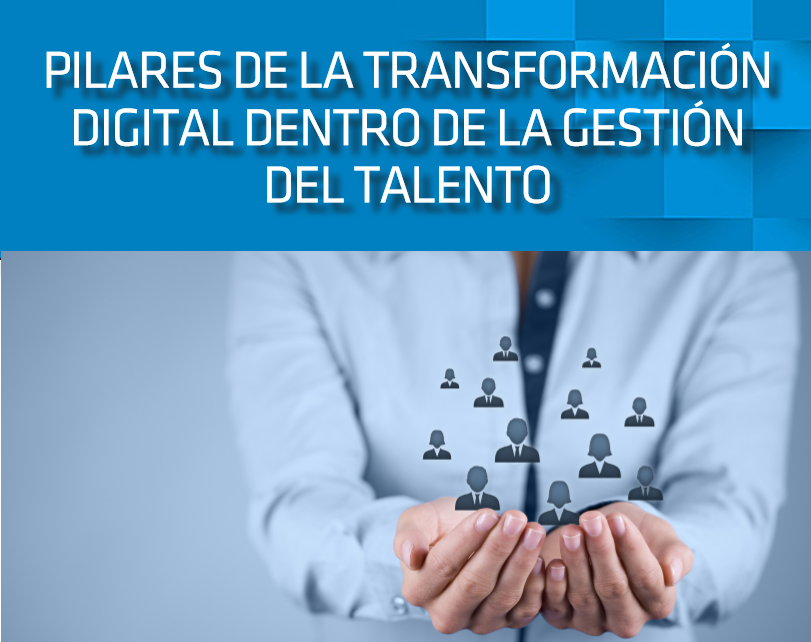PILLARS OF DIGITAL TRANSFORMATION IN TALENT MANAGEMENT

The digital transformation is Relevant for All Industries, only change the Speed and Adoption. The IDC Corporation of the United States defines Digital Transformation as a continuous process through which companies adapt or implement disruptive changes in their organization, their clients and their market (external ecosystem) through the capacity to replicate innovation in the business models, products and services, to unify the digital and physical components in a natural way.
In this way they improve not only the customer experience but also the operational results and the efficiency of all the departments of the organization.
There is talk of efficiency of the departments of the organization. Within those departments one that has an important challenge in this process of digital transformation is the Talent Management unit commonly known as Human Resources.
Within the Disciplines in a process of Digital Transformation is one related to the ‘Transformation of the Labor Force’. It promotes the transformation of the way in which talent is accessed and connected within the organization.
In the process of digital transformation of Human Resources environments, it will be necessary to combine, on the one hand, the change in the perception of the people’s own management, with the use of an integrating and flexible technology, on the other, that allows a greater participation of all employees.
At the pragmatic level, innovative processes can be incorporated, such as:
• The Collaborator’s Experience throughout the life cycle of the organization.
• A Recruitment and Selection process with high support of recruiting technologies and social networks.
• Notifications (traceability) of the entire selection process.
PILLARS
• Virtual Reality Platforms for induction processes and security policy.
• Self-service Platforms to centralize all the interaction of the collaborator during the cycle of permanence in the organization.
• Internet of Things (IOT) through devices to send updated information.
• Facial and voice recognition for restricted access and consultations.
• Virtual education programs with artificial intelligence support to adapt the programs to the advances obtained.
• Corporate social networks.

As we can see, the challenge is broad for the Talent Management unit. The initial steps have to do with the prioritization of the activities to be carried out. They must be consistent with the corporate strategy. No matter the industry in which we are the digital transformation is real and we are all being benefited by it.
A first task is to evaluate the level of maturity in which the organization is within the digital transformation. According to the IDC Corporation organizations can be in one of these stages: Detractor, Explorer, Player, Transformative and Disruptive. Depending on that level of Maturity is where the steps to be performed are defined.
The steps to be carried out are suggested to be carried out based on this scheme:
• Visualize the future • Build Roadmap by Horizon
• Identify and prioritize use cases
• Examine suppliers
• Start up
La transformación digital es real y ha calado profundamente en la manera de hacer las cosas dentro de las empresas. Inicialmente, el cambio fue entendido como un proceso de renovación de equipos y sistemas que permitirían a las organizaciones beneficiarse de las nuevas tecnologías, pero rápidamente se comprendió que la transformación tiene una cuota cultural muy importante si es que verdaderamente se quiere lograr un cambio. Es, en este contexto, que hoy la gestión de personas y el área de recursos humanos cumplen un rol muy destacado en la transformación digital de las organizaciones.

